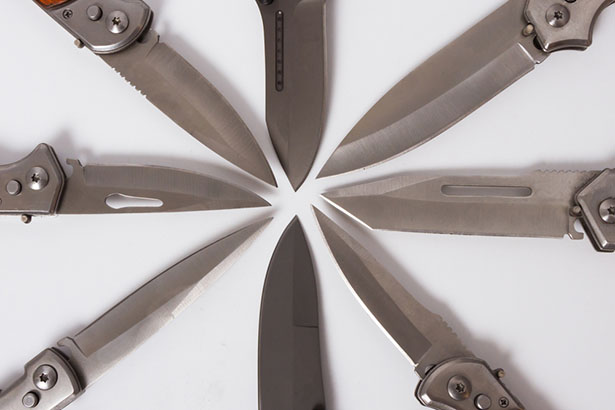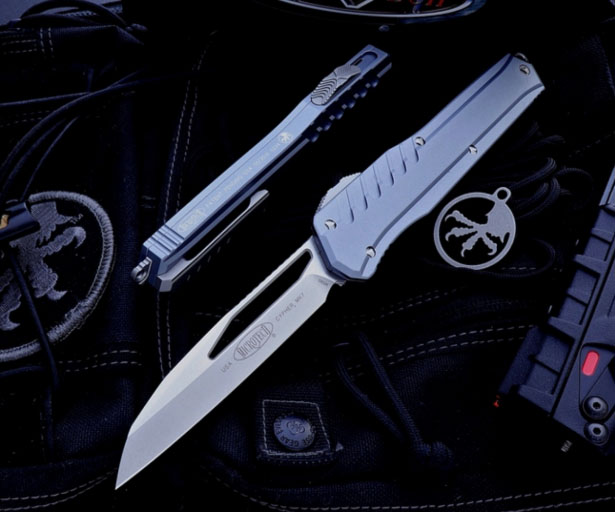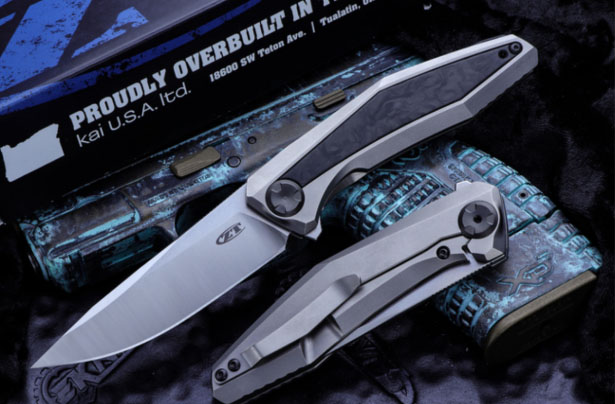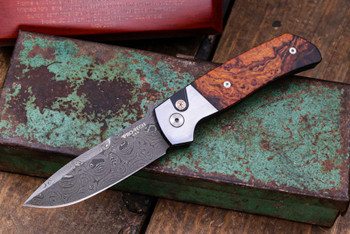Knife Steel 101: Everything You Should Know About Your Knife’s Blade
Feb 12th 2019

When it comes to choosing a knife with a durable blade, most people know that steel is the superior choice. Knife steel comes in different grades and compositions. When selecting your new knife, it’s essential to know the merits of each kind of steel so you can pick the right knife for your purposes.
The Five Key Properties of Knife Steel
Each knife blade can be assessed according to five primary properties:
- Edge retention
- Wear resistance
- Hardness
- Corrosion resistance
- Toughness
Different types of steel exhibit varying degrees of each characteristic, so it’s important to understand different knife blade types. As a knife owner, it’s essential to know what you want to use your knife for and what characteristics are most important to you.
Edge Retention
Edge retention refers to a knife steel’s ability to retain edge sharpness after periods of use. Edge retention might be important to you if you expect to be using the knife for long periods.
While there’s no defined, objective standard for edge retention, many people consider it to be the combination of an edge that resists deformation and wear resistance.
Wear Resistance
This term refers to a knife steel’s ability to withstand adhesive and abrasive damage. However, steel that’s too hard can become brittle and break.
Hardness
A knife steel’s hardness is typically measured in the Rockwell C scale and is one of the most important characteristics of a knife’s blade. The steel’s hardness or overall strength determines how resistant it is to deformation. Custom knives are often made with a specific balance of hardness, wear resistance and corrosion resistance in mind.
Corrosion Resistance
Corrosion resistance refers to steel’s ability to resist rust and damage brought on by salt, humidity and moisture. An extremely corrosion-resistant knife sacrifices edge sharpness.
Toughness
A knife steel’s toughness is its ability to resist cracking, breaking or otherwise becoming damaged under sudden loads. This is the shock load strength of a knife blade. Some specific brands like Microtech knives are renowned for their toughness.
Carbon Steel, Tool Steel and Stainless Steel
Carbon steel, tool steel and stainless steel are the three basic types of knife blades, each with its own unique balance of the five properties.
Carbon steel is made for toughness and durability, such as the steel used for heavy-duty hunting knives and machetes. However, because these types of steel need to be tough, sharp and durable, they often sacrifice on corrosion resistance and adhesive wear resistance.
Tool steel is made for cutting tools and is probably in many of the tools you’ll see around a machine shop. Many work knives are made with tool steel. These tend to be quite wear-resistant, but they sometimes sacrifice edge retention.
Stainless steel is carbon steel mixed with chromium. This increases the corrosion-resistance and sharpness of a blade but often means that the toughness of a blade is compromised.
Carpenter CTS-204P
Many Microtech Knives boast the American-made Carpenter CTS-240P steel. This is a type of carbon steel that retains a mean edge and is very polishable and corrosion resistant. However, it’s not the easiest to sharpen—but the edge-retention makes it worth it. That’s why it’s Microtech’s go-to steel of 2020. It makes for fantastic self-defense steel, especially for knives like the Microtech UTX 85.

MK7 Stainless Steel
MK7 stainless steel is used to craft the famous John Wick Microtech Cypher knives which are among the most famous OTF (out-the-front) knives on the market today. Extremely sharp and corrosion-resistant, this is a next-generation self-defense and everyday-use knife.
S35VN Stainless Steel
This variety of martensitic stainless steel is preferred by world-renowned manufacturers like Ramon Chaves. The Ultramar knife series makes use of this stainless steel due to its unusual levels of toughness that refuse to compromise on sharpness or corrosion resistance. It’s incredible steel has earned Chaves Knives numerous devotees.
This type of steel is also used in numerous Zero Tolerance blades due to its corrosion-resistance in work knives.
154CN
Exemplified by the Zero Tolerance 0200, 154CN steel performs well in this military-inspired survival knife that is ready to take on challenges posed by the world. Among all vanadium steel, this boasts the highest levels of chromium which grants the blade incredible corrosion resistance. The result is a wear-resistant, long-lasting edge.

CPM 20CV
This type of steel is yet another variety popularized by Zero Tolerance knives. Used in the Zero Tolerance 0470 Sinkevich and made by the Crucible Particle Metallurgy Process, this is a high-chromium, martensitic stainless steel with an unusually high volume of vanadium carbides. This more unified carbide distribution yields a type of stainless steel with abnormal durability, exceptional grindability, and superior toughness.
Final Thoughts
Consider the tasks you want to accomplish, how often you will use the knife and what knife steel attributes are the most important to you. Then select a knife steel blade that best suits your needs.
Contact the team at eKnives for more answers to any knife-related questions. Call or text (423) 525-9477 today or email us at info@eknives.com.

